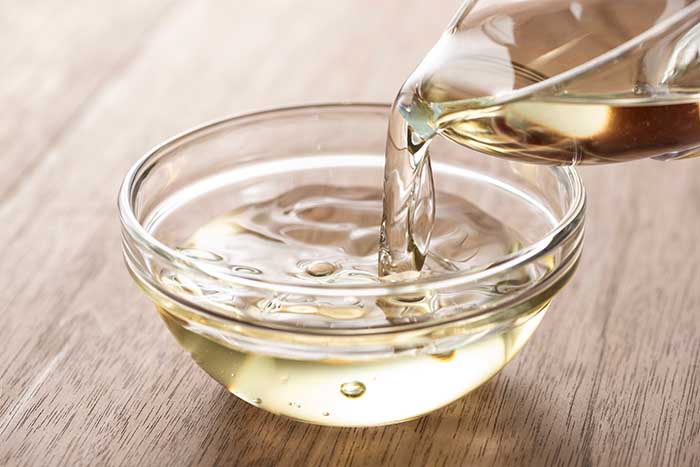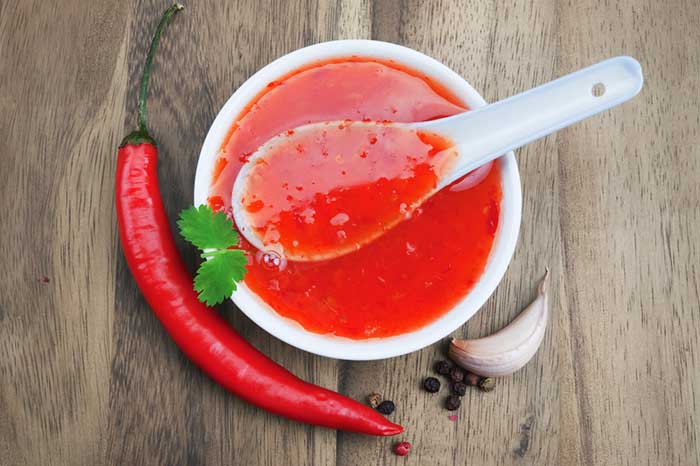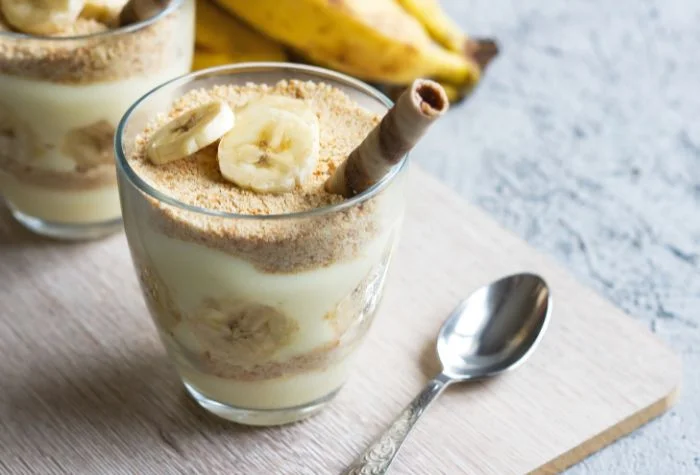Fix thin or watery sauce with our seven easy and effective ways to thicken chili con carne. From potato mashers to cornmeal, here are the best ways to make your recipe thick and meaty.
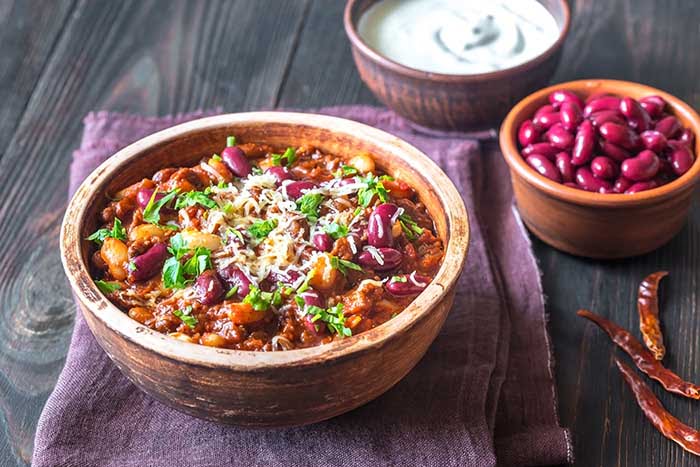
Chili con carne is one of my all-time favorite foods. Everyone thinks they make the best chili (and hey, we’re mighty proud of our turkey chili) but the bane of any cook’s life can be when the dish thins and turns watery.
You don’t want to lose any of the flavors or ingredients, so how can we get around this? Here are 7 easy ways to thicken chili.
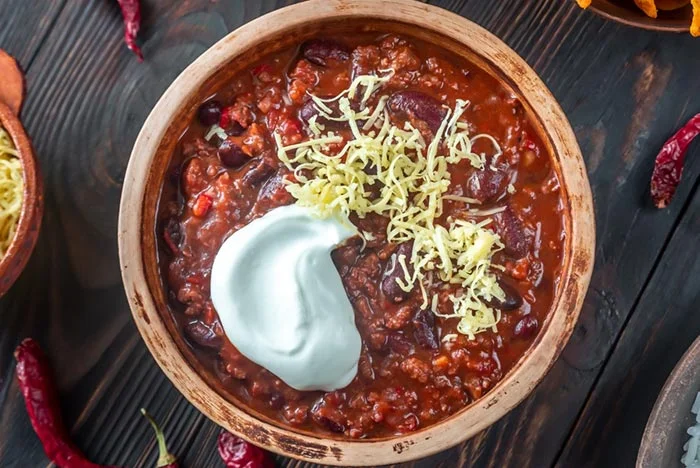
Potato Masher
Kicking off my list is a method that I prefer because it’s quick, easy, and doesn’t require any added ingredients. You can simply use a potato masher to mash the beans.
If you make chilli regularly and you haven’t got a masher, I think you will find the tiny expense needed to buy one a worthwhile investment, and they are not difficult to get a hold of.
This method works great because it has two main effects. One is that it breaks down the meat content of the chili, while the other is that it will mash the beans. This will release the natural starch found in the beans, which will in turn help thicken the chili.
You can do this straight in the cooking pot while the chili is cooking, but this can also release some of the water content in the beans. Instead, what I prefer is to mash the beans before I put them in the chili. I then strain them to help get rid of any excess liquid before than mixing into the chili and continuing to leave the chili on a simmer.
Just be careful not to go over the top. We don’t want the beans to be mashed to a pulp, but rather just have them mashed so they start to blend but still maintain that bean-like texture.
Cornmeal
There are several types of flour that are great thickening agents, but for me the most effective is cornmeal.
Just to be clear, here I am talking about cornmeal, not corn starch. I have seen people use cornstarch, but I much prefer cornmeal as a additive in this instance.
When you add it, you can either put it straight into the chili, or you can mix it into a little bit of water before adding it. I prefer to do the latter because this will help get rid of any clumps, which can be a bit unpleasant if you find them in your food.
If you choose to mix it with water, combine half a teaspoon of cornmeal with half a cup of water and add at a ratio of one to every eight cups of chilli. Once added, you will see the liquid begin to go cloudy but don’t worry, this will disappear as the cornmeal starts to absorb the excess liquid . You can then add to the chili and stir it in while it simmers.
If you decide to mix it straight in, start by adding half a tablespoon and stirring it in. Cornmeal is a very effective thickening agent for chilli, so it is best to add it gradually and to wait for a couple of minutes until you can what effect it has. If you add too much, the result will be a stodgy mess.
Finally, adding cornmeal does affect the taste and can add a slight graininess to the dish. So only add little by little until you achieve your desired consistency.
Tortilla Chips
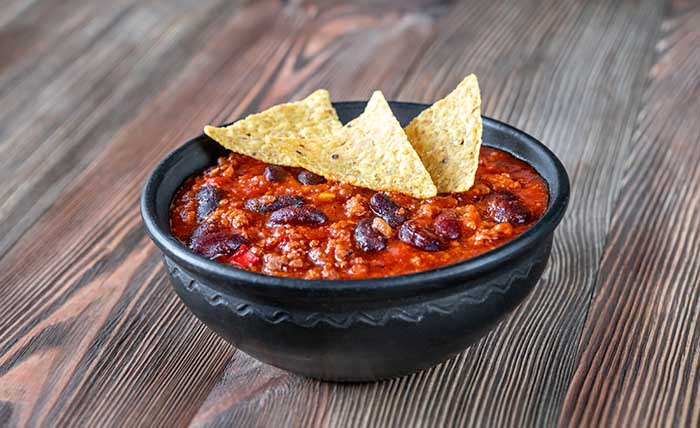
If you are one of those people who think chilli and tortillas are a match made in heaven, then using broken tortillas to thicken your chilli is a great way to go. The tortillas break down during the cooking and help to soak up the liquid to the point where you achieve the desired thickness.
Place your tortillas in a large freezer bag or wrap them in a clean tea towel, then give them a light bashing with a rolling pin or crush them with the palm of your hand. Add the crushed tortilla about thirty minutes before the end of cooking.
Remember, too little is better than too much. With experience you will learn exactly how much tortilla to add so that you get the result you want.
A useful tip is to be mindful of the salt content in tortilla chips. Too much dietary salt can be bad for you. If you are using salted tortillas, you will most likely want to reduce the amount of other added salt you add to the dish. Not only will tortillas add thickness, they will add a flavour of toasted corn.
Tomato Paste
I love my chilli to contain lots of tomato. It rounds off the sauce perfectly for me, and complements the spice beautifully. It also serves as a great thickening agent, and won’t dramatically affect the taste of the dish due to it already containing tomato.
Add about 6 ounces of tomato paste to your chili during the final hour of cooking. I recommend staggering it a bit, adding a couple of ounces every few minutes. This will help stir it in smoothly, and help prevent you from overdoing it.
A little tip: Some tomato pastes can be quite bitter. What I do to get around this is adding a tablespoon of granulated sugar is a great way to neutralise any bitterness that you might get in the final dish.
Tomato paste is readily available cheaply at almost every shop that sells foodstuffs. Buy the best you can, read the label and avoid those with too many ingredients, particularly sugar and salt.
Quick Oats
I think quick oats are really underrated for how versatile they are. They can be used to add flavor, add crunch, and add crisp. In this case, they are are brilliant at adding thick-ness.
Quick oats are relatively cheap and when you add them to your chilli you are not just adding a thickener, you are adding a virtual power-pack of goodness.
Add the quick oats in small quantities, as little as a dessert spoon at a time, stir in and continue to simmer. You should see results quickly. If you have still too much sauce, add another dessert spoon and repeat the process until you are satisfied.
Be careful though. They’re extremely absorbent, and the last thing you want is a pan of stodgy chilli and hungry family and friends waiting round you table waiting to sample it. Get it just right and when the oats cook out, you will discover that you will have added soft bits of goodness to your dish.
Masa
If you’re unfamiliar with masa, it’s a type of dough that’s used to make a lot of Latin American dishes, like corn tortillas and steamed tamales. It’s made from dried hominy, which is the result of soaking corn in water and lye. Some people confuse it with cornmeal, but it’s much more white and flour-like in consistency.
The good news is that a lot of chefs swear by it for thickening soups and sauces, so we’re going to use it for thickening our chili.
To use it for thickening chili, simply add a couple of tablespoons to it, and mix thoroughly. Let the chili simmer for 5-10 minutes and test it for thickness. If it’s still not thick enough, add another tablespoon.
Be warned that it can take a few minutes for it to impact the consistency of your chili, so don’t be too aggressive with adding it. Also, it does carry a little of flavor, so try not to add any more than you actually need.
Xanthan Gum
Xanthan gum is a type of sugar that’s derived from corn, soy, or wheat. It’s used in a whole range of products, like toothpaste, ice cream, and chewing gum. This is because it’s an excellent thickening agent.
It’s also used by a lot of people on gluten-free diets, because it can act as an excellent alternative to gluten in helping to bind things like bread and pastries.
A lot of the thickening agents mentioned on this list will have some effect on the flavor of your chili, but this isn’t the case with xanthan gum. It’s completely flavorless, making it a great option.
The downside is it can be quite expensive, but it is easily available online. Here’s a highly recommend one on Amazon.
It can also create lumps if you apply it directly to your chili, so I recommend mixing it in to a few tablespoons of cold water first, before then combining it in.
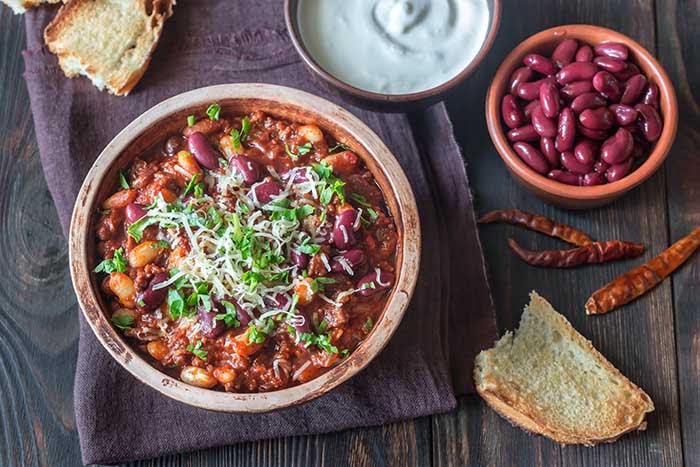
What’s the best way to thicken chili for gluten-free or keto diets?
Unfortunately, not all additives will be suitable for people on specific diets, particularly gluten-free or keto. The good news is that there are options for you out there.
Xanthan gum is a great gluten-free agent that’s used by a lot of people in other recipes, like bread, as a binding agent.
For keto diets, the good news is that keto-friendly alternaitves to a lot of the above are easily available online. There are sugar-free tomato pastes on Amazon, and flax seeds can act as a good alternative to oats.
Won’t chili thicken as it cools anyway?
Just like a lot of sauces, chili will thicken as it cools, but only slightly. A big factor in this is its protein content. Protein tends to shorten and become more rigid as its temperature lowers, which in turn makes it thicker.
However, the effect of this is unliekly to be significant enough to turn your chili from thin to thick, so I would still recommend using one of the techniques or additives above to prevent it from turning watery.
Does chili thicken as it cooks?
The water content in chili evaporates as it cooks, so if you let your chili simmer then it will start to reduce. However this doesn’t just mean that you can leave it to cook for as long as it takes to reach your ideal thickness. If you overcook it, it will turn bland. And, besides, we don’t all have the luxury of letting it cook for hours.
Let it simmer for no longer than 60 minutes. If it still hasn’t reduced enough to your liking, then you will need to try one of the methods above to thicken it.
